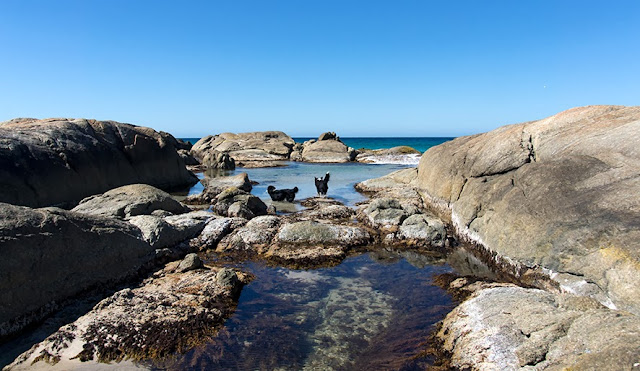I was in the garden the day the blue wren fledglings flew the nest.
I had watched as they built the nest in a prickly acacia right beside the path to the vege patch. A wren in the chook yard collecting feathers is a bit of a give away. Things went quiet for a while as the parents sat on the eggs, then once the babies hatched life got busy for them. That was when the rest of the mob joined in. There was a constant stream of them, catching food and delivering to the hungry mouths in the nest.
That morning, I was seated on the deck, savouring the early sunshine and the last mouthful of my breakfast, cashews and craisins. Two tiny grey shapes flashed across the corner of my eye. They zoomed onto the verandah, rapidly followed by Blake who dived after them. One veered up and away, the other was hidden behind Blake's large furry body. I yelled and jumped up in an instant my heart in my mouth. Horror at he thought of the tiny baby disappearing down his gullet.
Blake pulled back instantly and I saw a little pile of grey feathers on the ground ... not moving. This was not looking good. I picked up the body, it was alive, unharmed, but had a tangle of spider webs ensnaring a wing and a foot. No wonder it bombed onto the ground. You should have seen the blue wren mob suddenly appear when I picked the baby up. I was surrounded by four grey females and three bright blue males all scolding me. Very unhappy mobsters.
The fledgling felt so fragile as I carefully pulled the sticky web away. It was a delicate operation, the bird was tiny, just a few grams and the thinnest legs you can imagine. Finally free of web, I let it go, wondering how it could possibly fly at all, it had such a short tail and the bird was sooo tiny. But it was up and away onto the beams of the shadehouse. Soon the family were there beside it and normal feeding resumed.
This is the baby with a fuzzy parent in the foreground.




















































